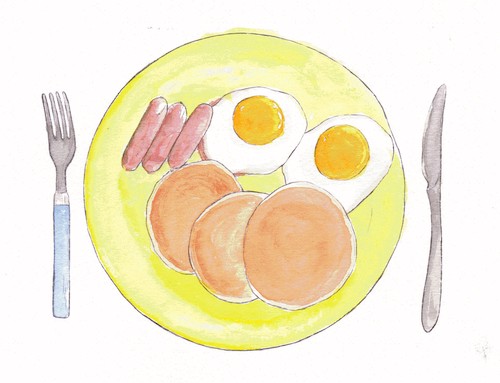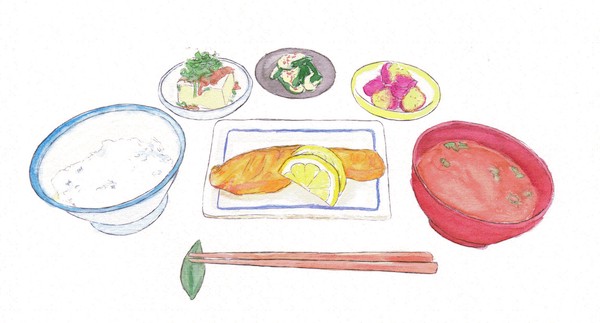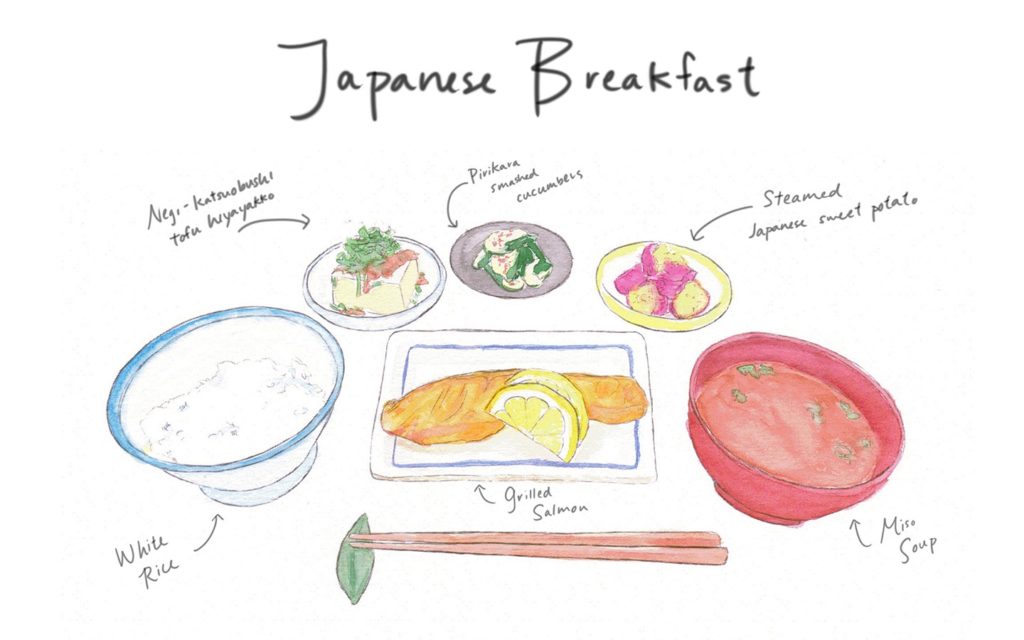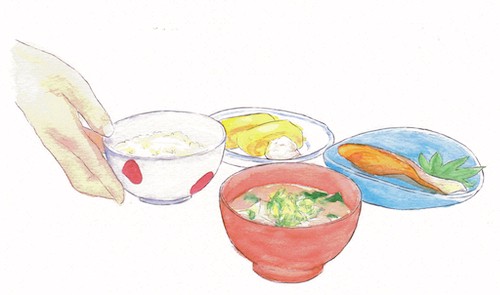
What is breakfast food?
I was born in the U.S. and spent my formative years there, so, naturally, I developed the sense that a normal breakfast should look something like pancakes, cereal, buttered toast, bacon, or sausages. It’s what was served to me when I went to friends’ houses for sleepovers and it’s what was advertised to me when I watched television. These are breakfast foods: The things that we should be eating in the morning to start our day.
But when my family would return to Japan for the summer, my idea of breakfast was challenged. Instead of the usual toast or cereal that I was used to, my grandmother would prepare rice, fish, pickles, miso soup, and some vegetables for us every morning. As a child, I would stare down at these foods in the morning and silently protest: These are not breakfast foods.

Numerous times I would try to convince my grandmother to let us buy those fluffy white milk breads from the bakery or sweet yogurts from the conbini instead. The best breads in the world, just out of my reach! Not to say she would never serve them to my siblings and me, but when she did, they were always presented to us as a special Western breakfast, not for daily consumption. “It’s just on occasion,” she would drill.
At first, when I didn’t get my way with bread and cereal, I would grumble and eat what was served to me with a look of disapproval. But as I got used to it, I began to see these dishes as very normal for the morning. Steamed ohitashi spinach served with breakfast? Typical. Salted grilled fish and shimeji mushroom miso soup? OK. Rice with natto, topped with egg? Sounds like breakfast to me.
But as I got used to it, I began to see these dishes as very normal for the morning….Rice with natto, topped with egg? Sounds like breakfast to me.
What a typical Japanese breakfast contains
As I ate a Japanese-style breakfast more often, I realized that breakfast really just looked like something I would eat for lunch or dinner, but in smaller portions, using mostly leftovers from the day before. Reheat the rice and vegetables, and cook the fish in a pan for 8–10 minutes. Heat water on the stovetop, make miso soup.

The breakfast debate: Do we need it?
Breakfast can definitely be part of a healthy and sustainable diet for those who feel as though they function better with it.
The real health problem in the U.S. is not with breakfast as a mealtime, but that typical breakfast foods add up to an unbalanced meal type, which leaves individuals feeling unsatisfied and hungry by midmorning and ravenous by the time lunch comes around. Instead, to make breakfast a part of a healthy diet, it should be constructed and treated like all of our other meals: something balanced, full of whole, hearty foods, prepared at home to help start our day on the right foot.
If you enjoy breakfast, consider redefining what breakfast should look like for you and how it can add balance to your diet. Remember that we don’t have to eat “breakfast food” for breakfast — we can eat whatever we wish!
